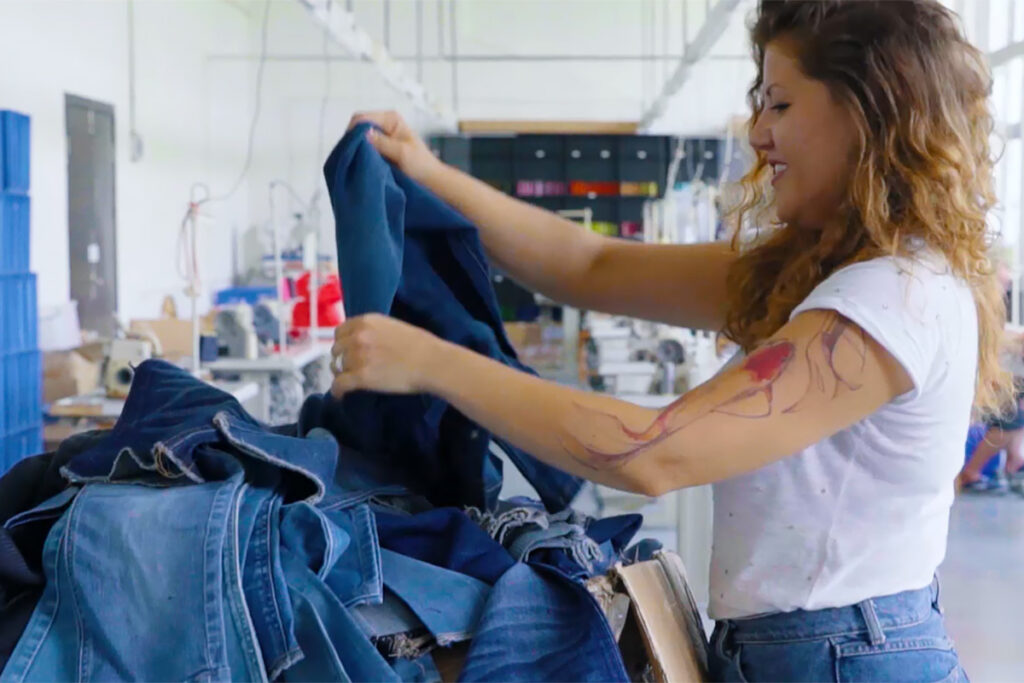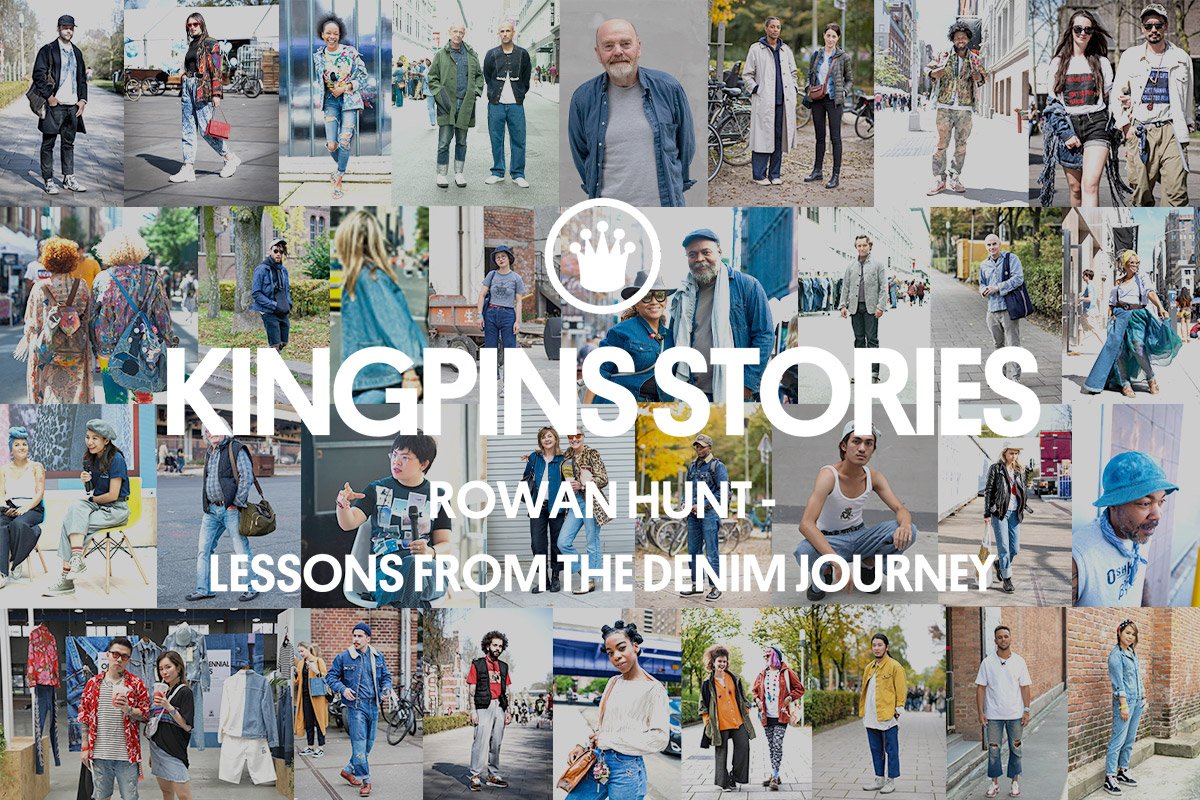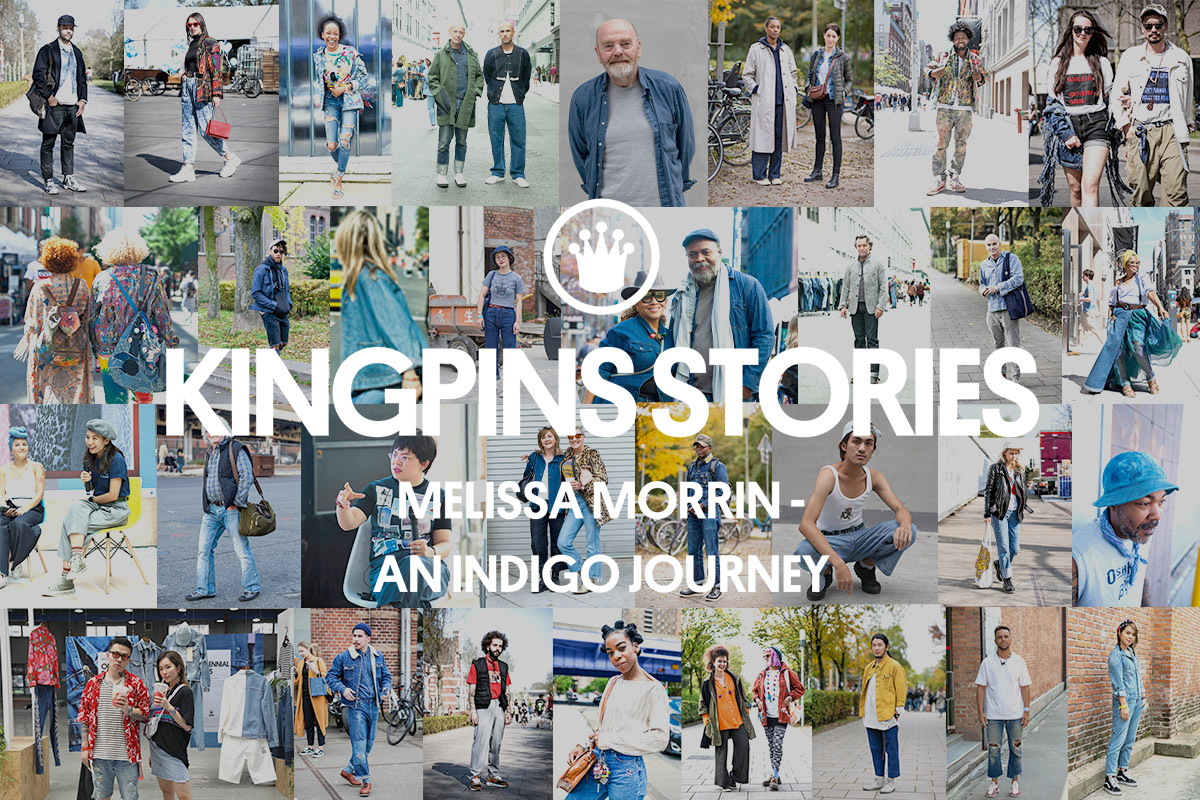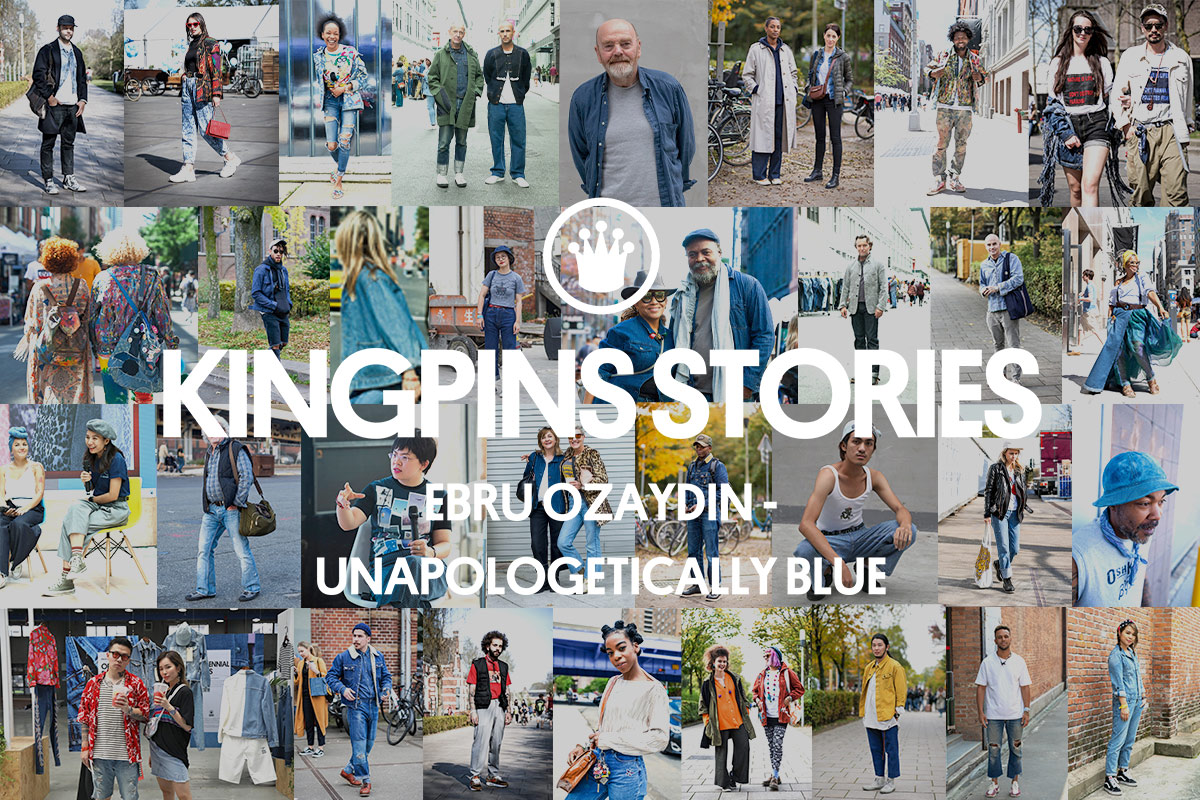Kingpins Stories – Xenia Sigorenko: A Circular Journey
Denim designer Xenia Sigorenko got her start in the industry in her native Russia but has found a career and a sustainable mission in her adopted home in China. After years working in traditional (and not-so traditional) sectors of the business and mass-producing denim, she launched UseDem, a company that transforms well-loved jeans into new pieces. In the latest Kingpins Stories, Xenia shares her journey from Russia to China and from large-scale production to the bespoke circularity of UseDem.
When I was a teenager growing up in St Petersburg, we couldn’t buy jeans easily at that time. We could buy them secondhand, but even secondhand, they could be pricey. We would just get them sometimes — when we could afford it. I had my favorite best jeans ever and I loved them. The jeans were by Only brand, they were 10oz., sky blue color, low rise with a flared hem — just like the styles worn by Britney Spears and Ginger from The Spice Girls (yes, it was a time when you learned how to look cool by watching MTV).
One day, my sister and I were fighting and she took scissors and cut my jeans from the crotch right down the seam of the leg. It was a huge drama. As a teenager, you want to look cool and I thought I would have these jeans forever. They represented my personality and they were so hard to get. I tried to fix them but they never looked the same again.
I promised myself that one day, I would be able to have all the jeans I want. It’s funny because now I have tons of jeans in our storage that we use in our company. As a teenager, the most important thing was to have a pair of jeans and now I have thousands of them. They are still important for me but in a different way.

Learning the Ropes
Right out of university, my first job was working with denim as a designer for a kid’s collection called Acoola, which was a new line started by Concept Club. One of the owners, Lars Pettersson, teamed up with former H&M Shanghai brand manager Jasminka Bach. Together, they put together a team of fearless young designers. Each designer was partnered with an experienced product manager. We learned a lot — and we learned quickly — by working on the real collections straight from university. I really appreciate that time and opportunity.
Opportunity in China
At the time, I was dreaming of traveling to China to see how jeans are made. I got the chance to move to Shanghai between my first and second real job, when I was hired by a company to create a copy of the Victoria’s Secret runway show. The company was founded by two men — one Russian and the other Chinese — who created runway shows that were produced in nightclubs.
It was a huge industry back in that time — entertainment in the nightclubs. Clubs would show the Victoria’s Secret show on TVs nonstop. Those two men came up with the idea of bringing Russian models and a designer who would copy the costumes and produce the show all over China.
I was invited to join a team creating the Victoria’s Secret-inspired show (truthfully, it was a fake VS show). I designed 36 costumes over two months and then we produced the show around China for about a year. During that year, I basically changed from designer to wardrobe supervisor every night there was a show. We were performing almost every night starting from 10 p.m. and running all night long sometimes. Then we would drive to another city, set up somewhere else and do it all over again.
But still I dreamed of visiting a denim factory. One day we had a photoshoot in an industrial area somewhere in the middle of nowhere in China. I was looking for a bathroom in the building where we were shooting and found myself in the middle of the sewing room of the denim factory.
That was like a sign for me to return to my path. After the nonstop travel with show, I felt like I was destroyed, taken apart and I said I cannot do it anymore. It was time to find a normal job.
A Normal Job
The normal job was product designer for a retail company, Melon Fashion Group, which is an old and quite famous company in Russia, which produces several brands, including Zarina, Love Republic, Moms and Monsters and Befree.
I was the denim product manager and eventually got to be the head of the department. But by then I was bored. There was no place higher up in the company for me to go and if I changed jobs, it would just be the same job in a different company. I was traveling a lot, mostly to Guangzhou, and visiting many factories producing denim. Often after visiting those factories, I couldn’t breathe for a week. In those days, they were still sandblasting denim, which is now prohibited and you cannot use this method anymore for finishing denim. I felt there was something wrong with the whole production process. For me, I was just visiting these factories once a week but there were people working there every day. There is a part of Guangzhou where they produce only denim and I saw the blue rivers around the factories. It made me feel bad that I was part of the mass production of denim. As a designer, I was no longer making something that made me feel creative. I was part of the machine destroying nature and workers’ health.
New Focus on Sustainability
I asked myself what can I, as a designer, do to change what I was seeing. I started to think about my skills and expertise. I am not a textile scientist, I cannot create a fabric from renewable resources, for example. But I can use fabric that already exists. One day, my boss asked me to clean out the showroom and throw away the fabric and half-leg jeans samples. I packed it all into boxes and sent them to my apartment and started to use these existing materials. There was a moment of realization when I saw that from one pair of jeans, I can make one backpack. Everyone has a pair of jeans they don’t wear anymore, and I can make that beloved pair of jeans into a backpack and extend the life of the thing they loved. That was 2015. I promised myself that I would not produce another pair of jeans. I have kept this promise and don’t produce anymore.
This is how UseDem came into being. People get attached to people and places and things. We are especially attached to something when it’s been with us for a long time, like how we wear our most favorite pair of jeans forever. But eventually, they become distressed with holes. It’s hard to say goodbye. It’s like going through all your memories. Instead of throwing them away, what if you transformed the memories from one shape to another? When the new upcycled backpack finally tears apart again, UseDem offers a lifetime guarantee to fix it. You can keep your best pair of jeans forever — even if you are now wearing it in a different way, like a backpack. One customer told me when she wears her backpack, she feels so cozy, it feels like home.

Transforming a Mindset
Every time I upcycle a pair of jeans, I try to inspire people in two ways. The first is personal: The buyer now has a useful item, like a backpack made from a pair of jeans. But they may also think of other things they can repair or transform. So that’s kind of a transformation of their mindset.
The solution to overconsumption doesn’t start with the developers, it starts with every person. If every single person in the world stopped buying clothing they considered disposable, then the overproduction would end. This is how we transform the mindset. More specifically, if we’re talking about environmental impact, we can say with one backpack, we save one pair of jeans, which means saving about 7,000 – 8,000 liters of water that is not being used to produce new fabric. We also line our backpacks with material made from recycled plastic bottles. It’s a reuse of about 36 plastic bottles. We also use recycled zippers, even recycled tags and we produce all these bags in an inclusive factory. This is the impact of one single backpack transformed from one single pair of jeans. We call these projects one for one.
Before the pandemic, we were working with brick-and-mortar stores in China and in The Netherlands that sold our products. We are currently in the recovery stage of our business and getting a lot of interest from the Chinese market for sustainable brands. We hope we can soon start over again with wholesale to physical stories. But for now, our bags are sold online on Chinese app platforms WeChat and Taobao.
Up Next
We have done quite a good job in China collaborating with big brands like Levi’s, Adidas, Porsche, Hermes, W Hotel, ASICS and Dentsu. If we can do it in China, then why shouldn’t we try to do it everywhere? Right now, I’m thinking how we can bring this idea to every single place where textile waste exists. The idea is simple: everywhere there are old jeans or textile waste, they can be transformed into useful products. We can share these initiatives or franchise the idea, including the patterns, designs and concept. We want to teach people to design from surplus material and wasted fabric so they can solve the problem locally.
Waste No More
I have been in love with denim since I got my first job. Denim is an amazing material. I just love the shades of blue and how it transforms over time. With time, it looks much better with all the distressing. But in terms of pollution, denim production is probably the most water- and chemical-consuming textile. I hope to change that with UseDem. What some waste, we call raw material.
I am so passionate about this concept and my true love of denim, I incorporated it into my wedding this fall. I wore a denim wedding dress and my husband wore a denim suit jacket and kilt. Both our outfits were made from upcycled test denim swatches from a factory.

For my dress, I wanted to create a feeling of denim pattern on the body, so I used mesh as the base fabric and attached the denim to it, creating a transparent and light effect. I finished the look with a Russian-style crown I made as a nod to my heritage. For my husband’s outfit, the challenge was to find the special check pattern that would look like the one that represents his Brigantes Celtic tribe heritage.
My dream is to one day see on all upcycled products our logo with three hands. The three hands symbolize creation, connection and protection. With creativity, we connect people and protect life.
In Chinese, the word secondhand is written as 二手. I propose a new word: 三手 to mean threehand. When you are done with your clothing, our company can be the third hand to create new life from your old clothes.
For more information about UseDem, visit usedem.nl or @weusedem.


